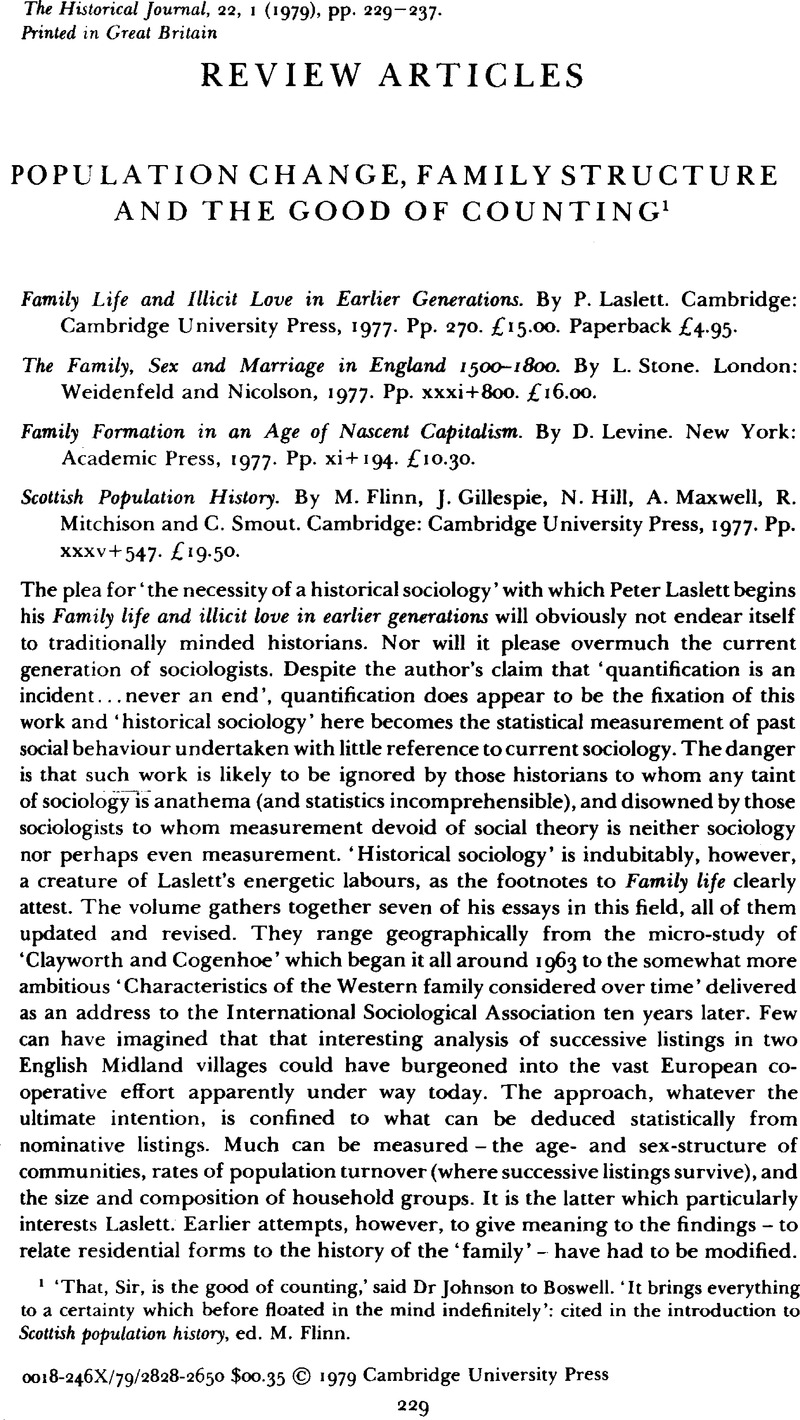Article contents
Population Change, Family Structure and the Good of Counting1
Review products
Published online by Cambridge University Press: 11 February 2009
Abstract

Information
- Type
- Review Articles
- Information
- Copyright
- Copyright © Cambridge University Press 1979
References
2 L. K. Berkner, ‘The use and misuse of census data for the historical analysis of family structure’, and R. Wheaton, ‘Family and kinship in Western Europe: the problem of the joint family household’ in Journal of Interdisciplinary History, vol. v (4).
3 The proportions cited in the text at this point (p. 162) would be reduced by using the more appropriate measure of expectation of life at age twenty, since very few individuals were either married or parents before that age.
4 Contrasting communities: English villages in the sixteenth and seventeenth centuries (Cambridge, 1974).
5 Wrigley, E. A., ‘The changing occupational structure of Colyton over two centuries’, Local Population Studies, no. 18 (Spring, 1977), pp. 9–22Google Scholar, found textile makers made up 12 per cent of male occupations cited in the parish register 1609–12 and 10 per cent in 1765–79.
6 Described vividly by Appleby, A., ‘Disease or famine? Mortality in Cumberland and Westmorland, 1580–1640’, Economic History Review, 2nd series, xxvi, no. 3 (1973), 403–32Google Scholar.
- 1
- Cited by

